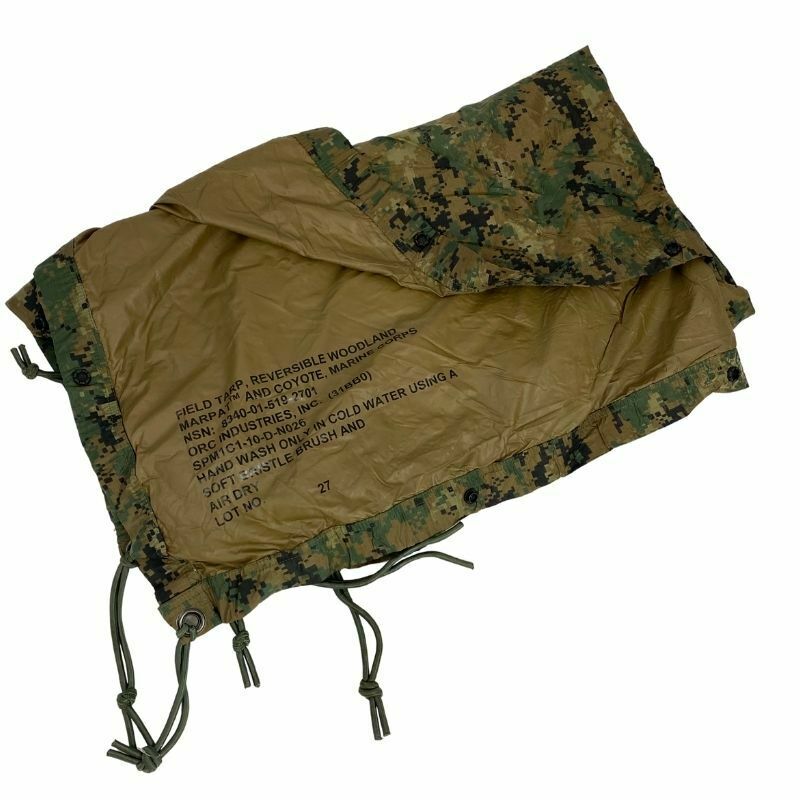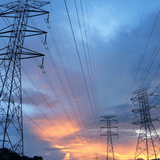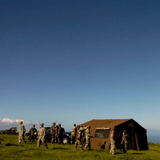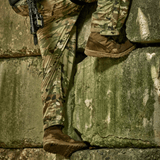Tarp Shelter: The Most Versatile Gear
Tarp Shelter Ideas and Uses: The Most Versatile Military and Civilian Piece of Gear
Military tarps are versatile pieces of equipment that can be used in a variety of ways. Some military units use tarps as a form of shelter, while others use them to conceal movement or equipment. Tarps can also be used as stretchers, rafts, and many other things. They are an important piece of gear for any soldier.
You can do many things with a military tarpaulin. It goes far beyond just the simple purpose you're more than likely thinking about right now. Continue reading to find out why.
How to Use a Military Tarp?
You may wonder, "isn't it just a simple waterproof cloth to keep your belongings dry outdoors"? That is a correct statement but it can also be used for so much more as you will learn. The army and other branches can't bring too much gear and equipment on a mission or in training so they typically include items that can be used for multiple purposes, the USMC MARPAT wet weather tarp being one of them.
Ground Sheet
A tarp can also be used as a ground sheet. This can provide an extra layer of protection against the cold and wet ground which provides better insulation. Protecting the bottom of your tent from sharp objects such as sticks and stones is necessary to avoid unwanted cuts, wounds, splinters, and damage to equipment so be sure to clear out the area before laying the tarp.
This also allows you to store gear that needs to be outside so it doesn't sink into the mud if it rains. Just be sure to watch out for items that may poke holes in the tarp such as a grill's legs. You can use flat stones or pieces of bark to lay on top of the tarp and then set these items on top of those to prevent puncturing the tarp.
Tarp Shelter
A tarp shelter can provide you with an effective means of quick protection from the weather, whether you’re looking for a quick and easy setup or something more long-term, your tarp can be used. If you're at a campsite that doesn't have access to wood resources, it's helpful to create a covered space by attaching the tarp to available posts that can support it.
You can use a larger tarp for this and the right length of tarp lines will do the trick. There are many tarp designs and fabrics that can be used as a sleeping shelter. To make a basic shelter and to ensure maximum protection, choose the standard nylon military tarp due to its versatility and durability.
The simplest and fastest tarp shelter you can set up is an A-frame shelter. You simply tie a line (rope, 550 cord, etc) between two trees or poles and put the tarp over it. Then tie down or use stakes to secure the sides and keep them spread and you're good to go!
Tipi Tarp Shelter
Tipi tarp shelter is an emergency shelter that can be set up in minutes. It is made from high quality, waterproof tarp and has been designed to provide protection from the wind and rain. It is perfect for use in emergencies or for people who are camping.
The fun fact is you can create it from scratch! Tipi Shelter can be easily set up by two people and does not require any special tools or equipment. Just have your support posts (wood, metal, etc), knots, and tarp and you're ready to go. Plus, it is also lightweight and easy to transport, making it perfect for use when traveling. The shelter can be good as a temporary home that provides enough protection if stuck for a short time outdoors.
If resources are available, you can create a foundation for square shaped setup or simply use it as a flat roof instead of simply attaching the tarp to a tree branch or making an A-frame style setup. It absolutely makes for another good shelter or storage protection option.
Hammock Tarp
If you're looking for an outdoor adventure, consider camping out under a tarp. This is a good practice, especially if you aspire to join the military. Tarp camping is a great way to experience the great outdoors without giving up all of the comforts of home. With a tarp, you'll have a dry place to sleep and protection from the elements. Plus, you'll have plenty of room to spread out and enjoy the fresh air.
Also, bringing this kind of military tarp while hammock camping will always leave you with enough room to be comfortable. You can assemble your hammock between two trees that can support your weight. Then secure the tarp between those same two trees higher up for rain protection. Moreover, there will be extra space on the floor area for your gear and other equipment. If you have a second tarp with you and use it as a ground sheet that will help to prevent your equipment from getting wet.
Trekking Tarp
Sometimes, even with the most advanced equipment, bad weather can still be unpredictable. When it comes to hiking tarp, there are a few different things you need to take into consideration. The first is deciding what type of hiking you'll be doing. If you'll be doing mostly day hikes, a smaller and lighter tarp might be a good option. If you're into backpacking or mountaineering, however, you'll need a larger and heavier tarp that can withstand more extreme conditions.
Another thing to consider is the climate where you'll be hiking and the quality of your hiking poles or trekking poles. Tents work well in colder weather, but they can be cumbersome and heavy in warmer climates. A standard military tarp might be a better option in these cases, as it can withstand different kinds of weather and is lightweight, and compacts to save space.
Wind Blocker Tarp
Tarps can be used to block prevailing wind to help keep you and your belongings warm. In very windy conditions, you can use several tarps to form a wall around your campsite or shelter, especially when you make a bonfire, just be sure not to have it too close or directly above the fire of course. You can also use rope, sticks, or other objects to hold the tarps in place.
Tarps can also help reflect heat back to you and your gear. In the morning, place your tarp on the ground or air it out and lay it flat to use as a wind block during the day to keep cold winds from chilling you and your belongings. At night, cover part of the tarp with leaves or debris then place it over your body to reflect heat back to you.
Water Collector Tarp
A tarp water collector is a device that collects water from good rain using the tarpaulin or other similar kinds of sheeting. The water is then directed into a storage container, such as a barrel, drum, or whatever is available. The tarp water collector can be set up in a variety of ways, depending on the size and shape of the tarpaulin you have. One common design is to tie the corners of the tarp to four stakes, which are then placed in the ground around the desired collection area. The tarp can also be draped over a frame made from wood or other materials to create a makeshift funnel of sorts (which then drains into the containers mentioned previously).
Things to consider when tent camping with a Tarp shelter
When constructing a tarp shelter when out tent camping or putting together an emergency shelter, avoid the following:
- Look around the area to ensure your shelter isn't right over an ant nest or any other type of animal tunnels/burrows. Better to take some extra time now as waking up to ants in the middle of the night doesn't seem like it would be the best alarm clock
- Don't establish it anywhere near a dead tree. This is important for safety reasons as a sudden wind gust can bring a dead tree or dead branches right down on top of you.
- Always go for the little tree in a group of bigger trees when looking for places to attach your tarp lines. The reason for this is the smaller trees can flex which helps to reduce the strain on your lines used for securing your tarp.
- If you are camping in a coastal area, make sure your chosen location is above the high tide. Look for erosion signs on the landscape as well as areas that are muddy even in the early afternoon. I think this would make for an even worse alarm clock than the ants.
- It may seem like a good idea but try not to set up your sleeping quarters on the top of a ridge or hill. The reason for this is there is no wind protection on top of it just being inherently windier. The best place is slightly up a hill where the water can drain down but you have your backside protected by the earth.
- Another seemingly good idea is to camp next to a riverbank but let me assure you this can be a horrible idea. If a weather system comes in unexpectedly as it can and it brings heavy rain then you may be in trouble. That can cause the river to swell and the water usually moves faster (think flooding footage you may have seen in the news at some point). If you are too low and near the river bank and it happens at night when you are sleeping then you may get swept along with it.
The many uses of a tarp
As you have now learned there are many uses for tarps. A tarp can be used to make shelter, protect supplies from the rain or snow, and even as a privacy screen while changing clothes.
I hope this article taught you something you can use in the future while out in the field and has you thinking of your own uses. In any case, you now know that a tarp should be considered a necessary item in any equipment setup.








